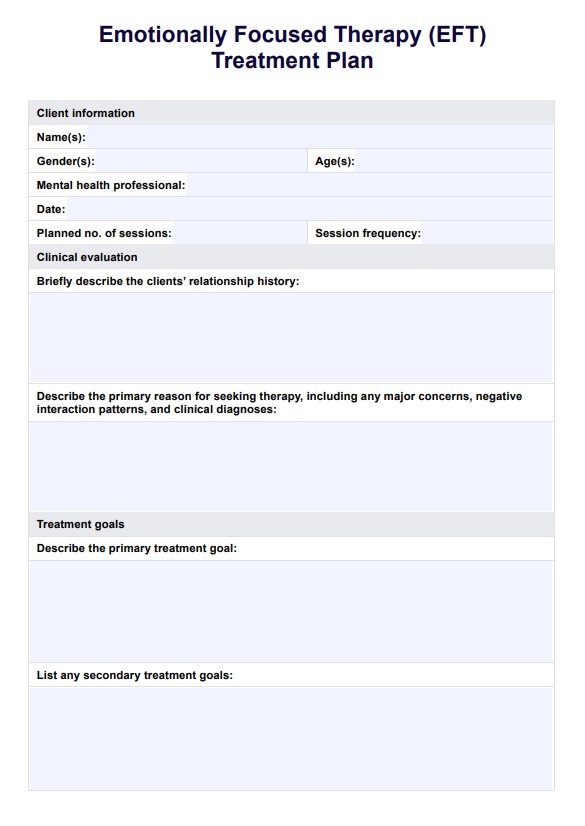Emotionally focused therapy (EFT) treatment is designed to be a relatively short-term intervention to interrupt maladaptive behavioral patterns and establish new interaction patterns. EFT typically involves 8 to 20 sessions, depending on patient outcomes, the complexity of the issues, the emotional engagement of the clients, and the rate of progress.

EFT Treatment Plan
Access an EFT Treatment Plan template for devising productive, emotionally focused couples therapy sessions focused on restructuring negative interaction cycles.
EFT Treatment Plan Template
Commonly asked questions
The main goals of emotionally focused therapy (EFT) are to enhance emotional connection, improve communication, promote acceptance, and foster secure attachment bonds between partners.
Emotionally focused therapy (EFT) differs from different therapy approaches by focusing on emotions and attachment dynamics within relationships, prioritizing the creation of a secure emotional bond between partners as a pathway to healing and relational satisfaction.
EHR and practice management software
Get started for free
*No credit card required
Free
$0/usd
Unlimited clients
Telehealth
1GB of storage
Client portal text
Automated billing and online payments











